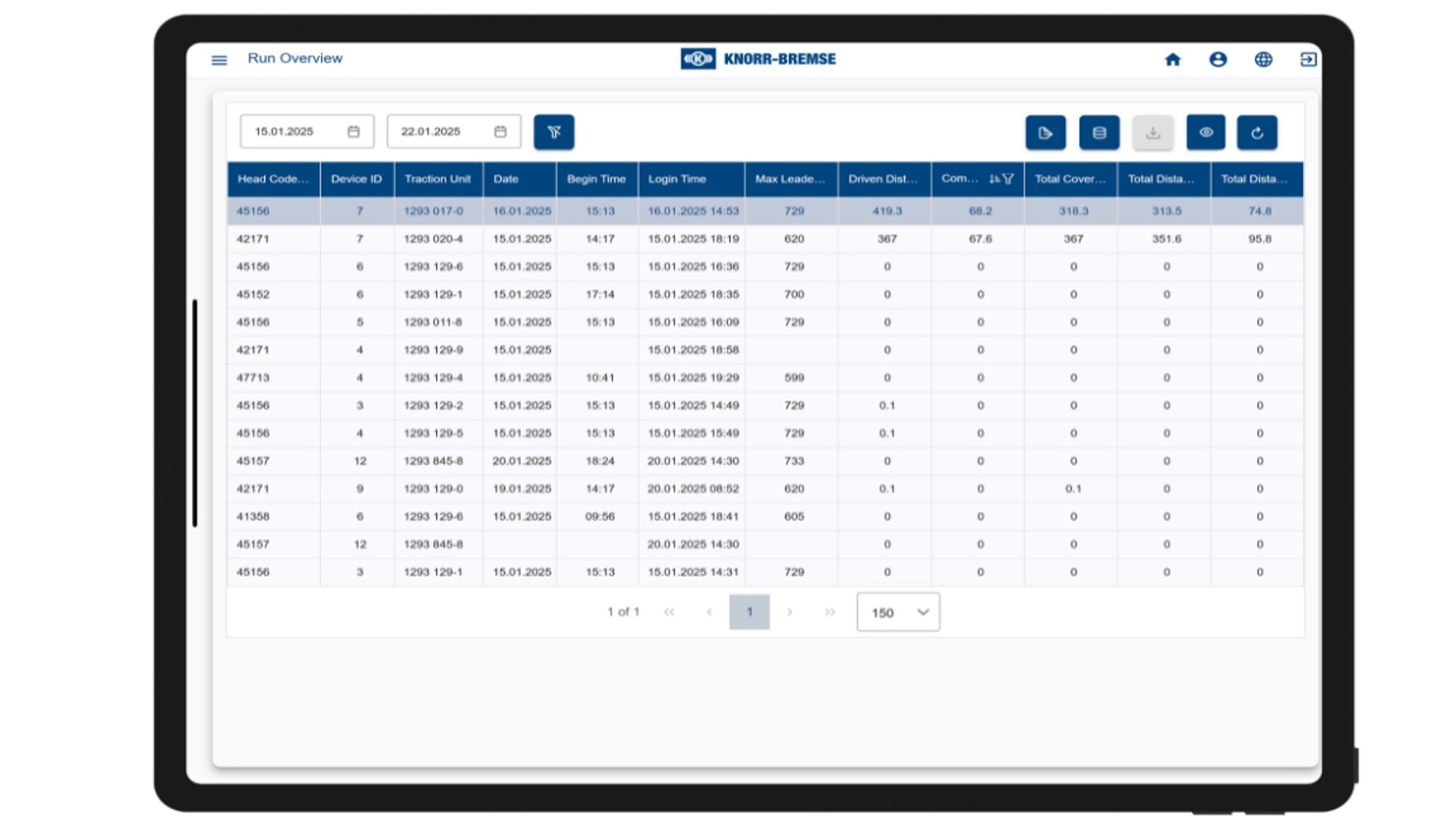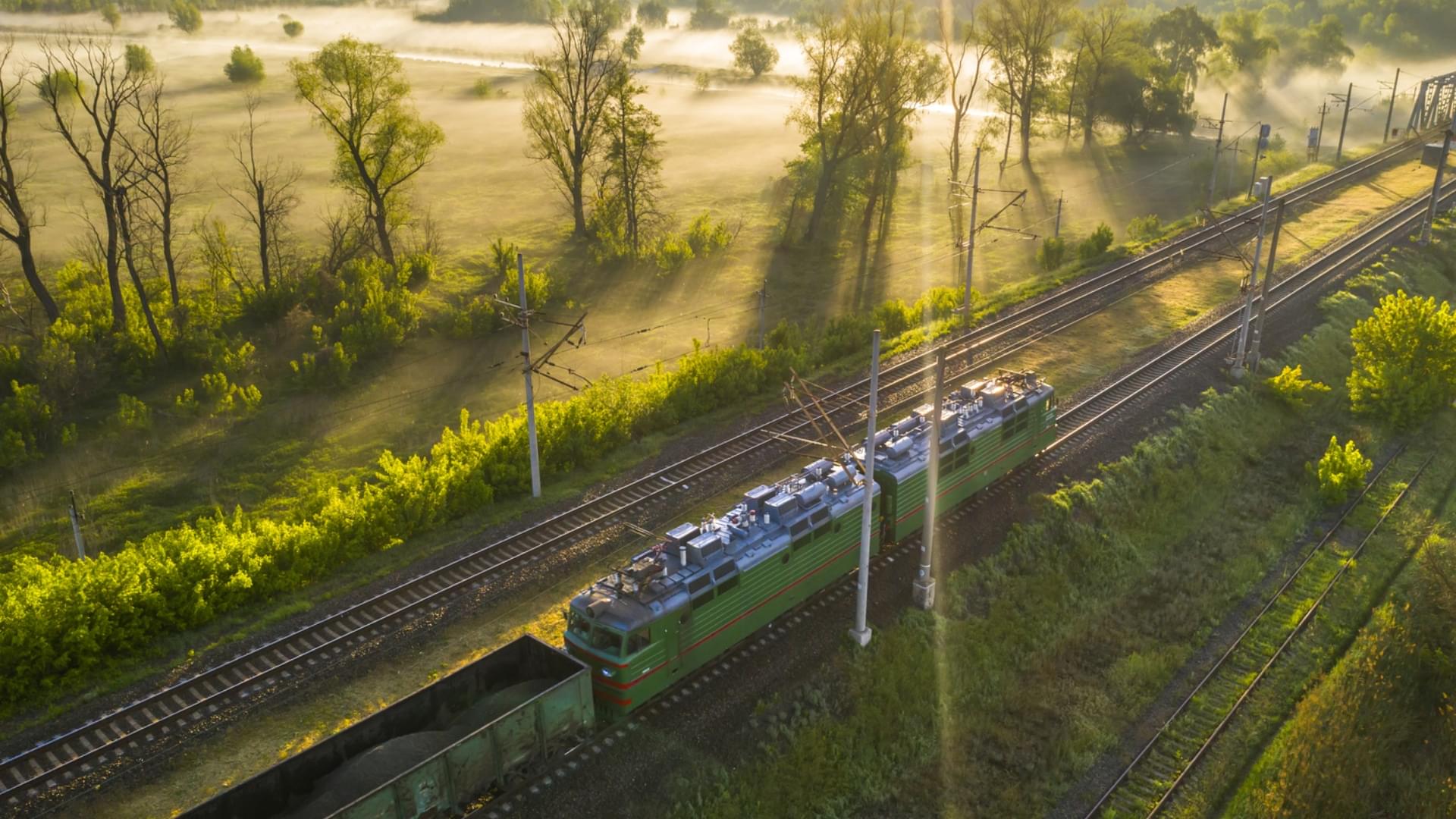
The smart driver advisory system LEADER Flow designed by Knorr-Bremse, optimizes every train journey by making driving recommendations that even take live traffic information into account. It reduces energy consumption, cuts rail freight travel times and improves passenger transit punctuality – a major contribution to sustainable, efficient rail transportation.
Despite state-of-the-art technologies, train drivers still play a key role in Europe’s rail traffic environment. LEADER Flow helps them to make optimum use of traction energy by driving in an economical, resource-efficient manner. It optimizes the flow of passenger and freight traffic unlike any other driver assistance system for trains. By integrating a comprehensive range of data sources – including Deutsche Bahn’s “green functions” – LEADER Flow demonstrably lowers energy consumption and reduces wear on rails and rolling stock. Passenger and freight transportation has never been so climate-friendly.
Benefits at a glance
LEADER Flow is a cutting-edge, high-performance driver advisory system with many advantages:
- Two driving modes to optimize energy consumption: optimized algorithm based on live traffic data to reduce energy consumption while simultaneously minimizing freight train travel times or optimizing passenger train punctuality.
- User-friendliness: high (94%) level of acceptance among train drivers (at DB Cargo)
- ROI from day one thanks to exclusively performance-based billing with no upfront costs
- Easy to integrate: flexible connection to existing display systems
- Carbon reduction: sustainable contribution to meeting climate targets
How LEADER Flow calculates optimized driving recommendations
We provide train drivers with intuitive driving recommendations that maximize energy savings while simultaneously optimizing travel times. We have achieved this by designing LEADER Flow to calculate recommendations based on a broad range of data sources:
Contact us!
80809 München
Deutschland - Germany

Flexible data interfaces
A key feature of LEADER Flow is the ability to flexibly connect with various data interfaces. The more data the system can access, the better the resulting driving recommendations will be – and the greater the energy savings achieved.
The supported file formats cover the most important SEFRA and railML options. For maximum performance, it also supports the modular integration and processing of proprietary, customer-specific data. This flexible interface management makes LEADER Flow a versatile superstar among driver advisory systems, capable of seamless integration into multiple systems and markets.
Three-stage data optimization
- Optimization from a network perspective
First, it collects live traffic data – where available – from the infrastructure, known as “infrastructure time slots”. This tells train drivers where they should be at what time to ensure that rail traffic flows smoothly. In Germany, this data is provided by DB InfraGo. This live data is given top priority by it’s calculation function. The calculated optimum improves traffic flow – hence also energy efficiency – across the entire rail network. - Optimization at local level
The second priority is to review live traffic information – that is, information on trains ahead and behind – via infrastructure blocks and signals. This enables LEADER Flow to improve traffic flow and energy efficiency directly at train level. - Global driving recommendations
The third priority, used as the basis for calculating and generating driving recommendations, is routing information, speed limits, timetables, vehicle data and (in the near future) weather conditions.
Two modes for passenger and freight traffic
Passenger and freight transportation services pose different challenges for driver advisory systems. For passenger transit services, punctuality is paramount, whereas the top priority for rail freight services is shorter travel times. LEADER Flow offers two driving modes to meet specific passenger transit and rail freight requirements.
Details
Traffic Flow mode “According to Timetable ” mode LEADER Flow calculates accurate estimates of arrival times for individually selected stations or stopping points, taking account of a configurable time buffer. This enables freight trains to “go with the (traffic) flow”, avoiding unnecessary braking and stops. This maximizes energy efficiency and – surprising as it may sound – means that trains arrive earlier! Specially for passenger transit, LEADER Flow will be developed, enabling drivers to follow the timetable with precision. Passengers and train drivers will benefit from improved punctuality and more predictable journey planning.
In both driving modes, LEADER Flow recommends an anticipatory driving style adapted to live traffic conditions, to reduce unnecessary braking and stopping maneuvers. In short, this innovative onboard driver assistance system enables more efficient utilization of rail infrastructure by improving traffic flow.
A user interface optimized for train drivers
Ease of operation is key to the acceptance and success of driver advisory systems. Here, LEADER Flow sets new standards. Clear driving recommendations that are easy to understand, plus real-time information on timetable, track utilization and the traffic situation, all have a single aim: to take the pressure off drivers by helping them to make good decisions. The user-friendly interface also minimizes stress – a vital factor in developing an energy-efficient driving style.
Key features and benefits:
- Intuitive visualization: horizontal display of driving recommendations and topography
- Display of live traffic data: block assignments and infrastructure time slots
- Dynamic timetable adjustment to avoid unnecessary stops
- Flexible implementation: LEADER Flow can be used as a standalone (handheld) tablet solution, or integrated into existing display and train bus systems
LEADER driver acceptance rate

Monitoring and managing fleets from the back office
LEADER Flow provides a cloud-based platform for real-time monitoring of the entire fleet, including data analytics, so operators can analyze individual journeys and export data for post-processing.



History of success with DB Cargo
DB Cargo, one of Europe’s largest rail freight operators, has been using our driver advisory system since 2018.
- Energy savings: 6.5% reduction of energy consumption in freight transportation (using 2018 algorithm)
- User-friendly experience: Intuitive user interface has achieved 94% acceptance by train drivers
- Collaborative innovation: continuous further development plus integration of live traffic data

No commercial risk – just measurable success
LEADER Flow is not just revolutionizing rail transportation; it is also breaking new ground in terms of licensing fees. Billing is exclusively performance-based. In real terms, this means return on investment (ROI) from day one.
All commercial benefits at a glance:
- No financial risks thanks to performance-based billing – no upfront costs
- Maximum energy and cost efficiency
- Real-time traffic detection: anticipatory driving style adapted to track occupancy
- Sustainability & reduced wear: The combination of reduced and optimized braking makes for a low-wear driving style
- Parallel display in split screen: LEADER Flow can be used in Android split-screen mode in parallel with other operating applications such as the dynamic timetable in DiLoc®|Sync
- Minimal training required thanks to an intuitive, horizontal user interface
- No maintenance costs: The system is always up to date thanks to its cloud connection
Experience LEADER Flow in action
Contact us for a presentation of the system and its intuitive user interface – the first step toward using it in your fleet!


